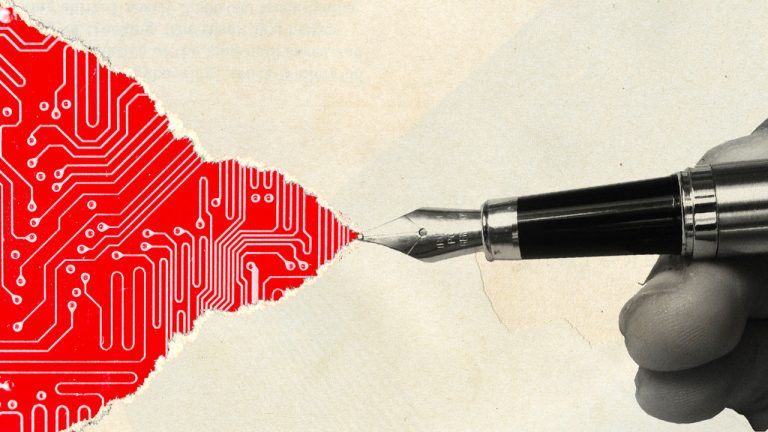The Rise of Synthetic Media: A Looming Information Apocalypse?
The digital age has ushered in an era of unprecedented access to information, connecting billions across the globe and democratizing knowledge sharing. However, this interconnected world also faces a growing threat: the proliferation of synthetic media, often referred to as deepfakes. These sophisticated fabrications, powered by artificial intelligence, blur the lines between reality and fiction, making it increasingly difficult to distinguish authentic content from manipulated or entirely fabricated information. From doctored videos of political figures to entirely synthetic news reports, the potential for malicious use of this technology is vast, threatening to erode trust in institutions, fuel social unrest, and undermine democratic processes. The ease with which such content can be created and disseminated presents a formidable challenge to individuals, organizations, and governments alike.
The underlying technology driving this phenomenon is rapidly advancing. Generative adversarial networks (GANs), a class of machine learning algorithms, are at the forefront of this revolution. GANs pit two neural networks against each other: a generator that creates synthetic content and a discriminator that attempts to distinguish the generated content from real data. Through this iterative process, the generator becomes increasingly adept at producing realistic fakes, constantly improving its ability to fool the discriminator and, ultimately, human observers. Initially requiring substantial computing power and technical expertise, the tools for creating synthetic media are becoming increasingly accessible. User-friendly software and online platforms democratize these capabilities, placing the power to manipulate reality in the hands of anyone with an internet connection. This ease of access, coupled with the increasing realism of the generated content, creates a perfect storm for the spread of misinformation and disinformation.
The implications of this technological advancement are far-reaching and potentially devastating. In the political arena, deepfakes can be weaponized to discredit opponents, spread false narratives, and manipulate public opinion. Imagine a fabricated video of a political candidate making inflammatory remarks or engaging in illegal activity surfacing just before an election. The damage such a video could inflict on a campaign, regardless of its veracity, is immense. Beyond politics, deepfakes pose a significant threat to individuals. Synthetically generated intimate images or videos can be used for blackmail, harassment, and revenge porn, inflicting devastating emotional and reputational harm on victims. The very fabric of trust that underpins our social interactions is threatened by the potential for such malicious manipulation.
The challenges presented by synthetic media extend beyond the creation of entirely fabricated content. Existing media can be subtly manipulated to alter meaning and context. A seemingly innocuous edit to a video, for example, changing the order of words or subtly altering facial expressions, can dramatically distort the message conveyed. These subtle manipulations are often harder to detect than outright fabrications, making them particularly insidious. The sheer volume of information circulating online further exacerbates the problem. In the deluge of data, it becomes increasingly difficult for individuals to discern credible sources from manipulated content, leading to a state of information overload and a growing sense of uncertainty about the veracity of anything encountered online.
Combating the spread of synthetic media requires a multi-pronged approach. Technological solutions are crucial. Researchers are working on developing sophisticated detection methods, leveraging AI and machine learning to identify telltale signs of manipulation. These methods analyze video and audio for inconsistencies, such as unnatural blinking patterns, lip movements that don’t match the audio, or digital artifacts that indicate manipulation. However, as detection methods improve, so too do the techniques used to create deepfakes, leading to a constant arms race between creators and detectors. Therefore, technological solutions alone are insufficient. Media literacy education is paramount. Equipping individuals with the skills to critically evaluate online content, identify potential manipulations, and assess the credibility of sources is essential to mitigating the impact of synthetic media.
Beyond individual efforts, platforms and governments have a critical role to play. Social media companies must take responsibility for the content shared on their platforms, implementing robust policies and procedures for identifying and removing deepfakes and other forms of manipulated media. Governments must also grapple with the legal and ethical implications of this technology, considering regulations that strike a balance between protecting freedom of expression and preventing the malicious use of synthetic media. The fight against synthetic media is not merely a technological challenge; it is a societal one. It requires a collective effort from individuals, organizations, and governments to safeguard the integrity of information and protect the foundations of trust upon which our societies are built. Failure to address this looming threat could have profound consequences, ushering in an era of information chaos and eroding our ability to distinguish truth from falsehood.


